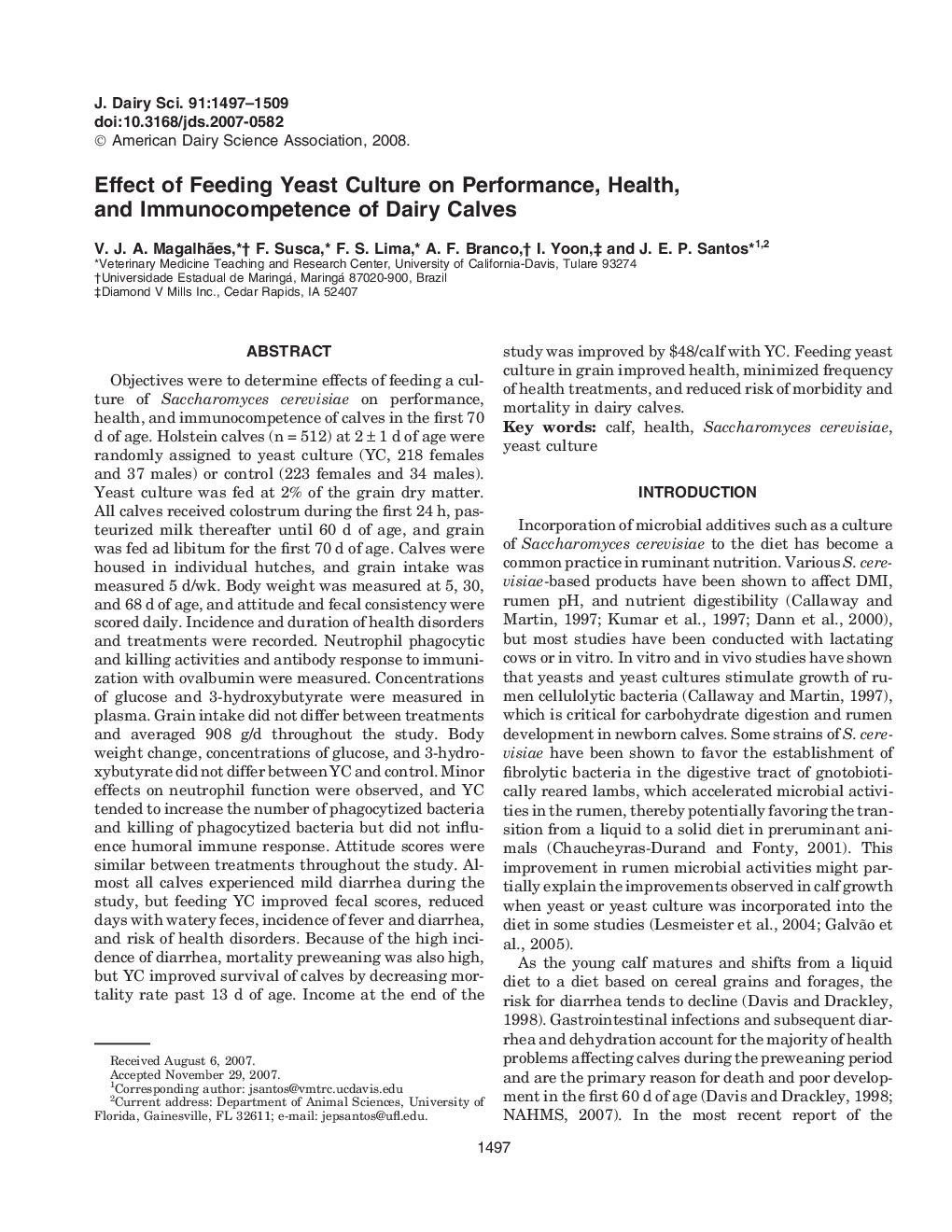| Article ID | Journal | Published Year | Pages | File Type |
|---|---|---|---|---|
| 2440051 | Journal of Dairy Science | 2008 | 13 Pages |
Abstract
Objectives were to determine effects of feeding a culture of Saccharomyces cerevisiae on performance, health, and immunocompetence of calves in the first 70 d of age. Holstein calves (n = 512) at 2 ± 1 d of age were randomly assigned to yeast culture (YC, 218 females and 37 males) or control (223 females and 34 males). Yeast culture was fed at 2% of the grain dry matter. All calves received colostrum during the first 24 h, pasteurized milk thereafter until 60 d of age, and grain was fed ad libitum for the first 70 d of age. Calves were housed in individual hutches, and grain intake was measured 5 d/wk. Body weight was measured at 5, 30, and 68 d of age, and attitude and fecal consistency were scored daily. Incidence and duration of health disorders and treatments were recorded. Neutrophil phagocytic and killing activities and antibody response to immunization with ovalbumin were measured. Concentrations of glucose and 3-hydroxybutyrate were measured in plasma. Grain intake did not differ between treatments and averaged 908 g/d throughout the study. Body weight change, concentrations of glucose, and 3-hydroxybutyrate did not differ between YC and control. Minor effects on neutrophil function were observed, and YC tended to increase the number of phagocytized bacteria and killing of phagocytized bacteria but did not influence humoral immune response. Attitude scores were similar between treatments throughout the study. Almost all calves experienced mild diarrhea during the study, but feeding YC improved fecal scores, reduced days with watery feces, incidence of fever and diarrhea, and risk of health disorders. Because of the high incidence of diarrhea, mortality preweaning was also high, but YC improved survival of calves by decreasing mortality rate past 13 d of age. Income at the end of the study was improved by $48/calf with YC. Feeding yeast culture in grain improved health, minimized frequency of health treatments, and reduced risk of morbidity and mortality in dairy calves.
Related Topics
Life Sciences
Agricultural and Biological Sciences
Animal Science and Zoology
Authors
V.J.A. Magalhães, F. Susca, F.S. Lima, A.F. Branco, I. Yoon, J.E.P. Santos,
